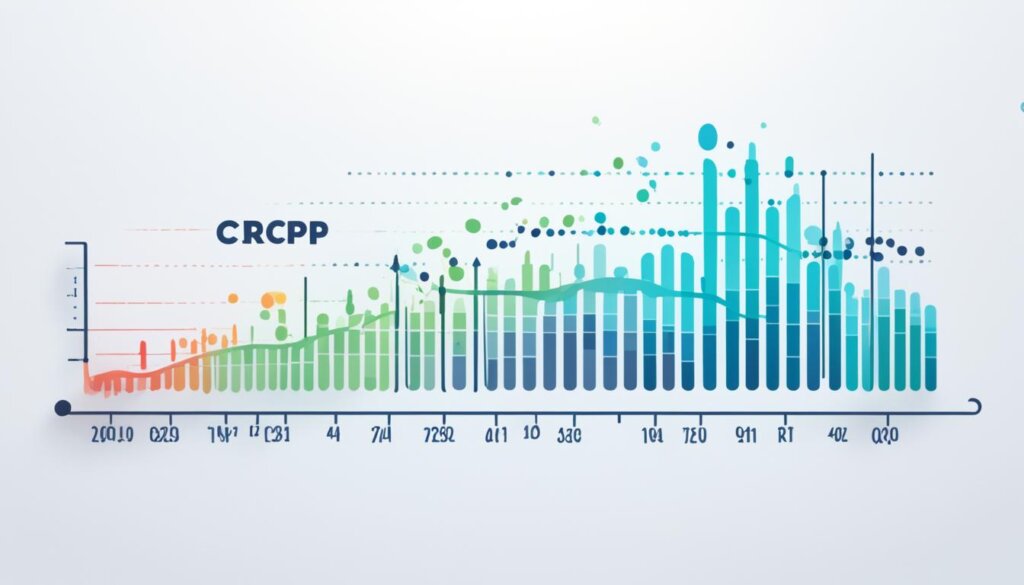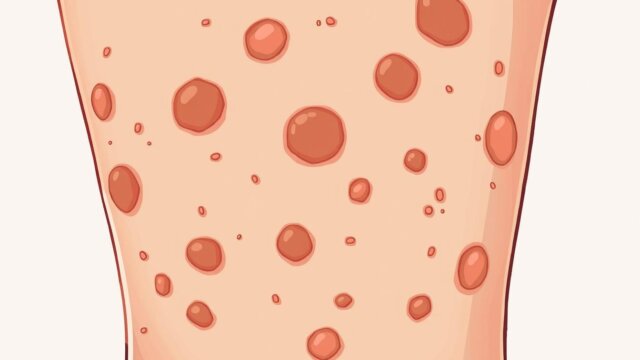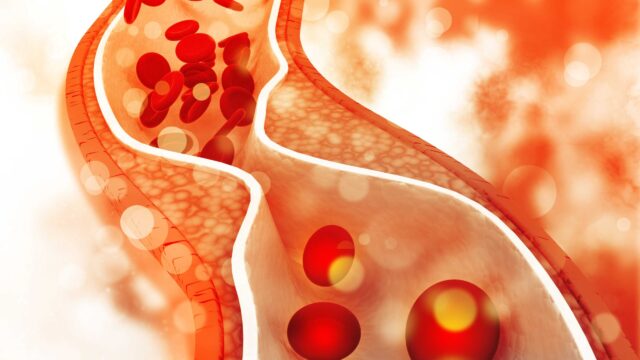FTC disclaimer: This post may contains affiliate links and we will be compensated if you click on a link and make a purchase.
About 1 in 20 healthy people might have CRP levels outside the normal range, says Cleveland Clinic. This fact shows how important it is to know about C-reactive protein (CRP). CRP is a key marker for inflammation in our bodies. It helps us understand many health issues, like infections, autoimmune diseases, heart disease, and cancer risk.
This guide will cover the CRP test’s purpose. We’ll look into what normal and high CRP levels mean. And we’ll see how the test results help keep track of your health.
Key Takeaways
- C-reactive protein (CRP) shows how much inflammation is in our bodies.
- A CRP test checks how much CRP is in our blood.
- Normal CRP levels are under 0.9 mg/dL. Levels from 1.0 to 10.0 mg/dL are slightly high.
- High CRP levels can mean you have infections, autoimmune diseases, heart disease, or cancer.
- Knowing your CRP test results helps doctors diagnose and manage your health.
What is C-Reactive Protein (CRP)?
Definition and overview of C-reactive protein
C-reactive protein (CRP) is an acute-phase protein made by the liver when the body has inflammation. It’s a nonspecific biomarker, meaning it shows inflammation but not what’s causing it. CRP levels go up when there’s inflammation, infection, or tissue damage.
CRP is usually low in blood but goes up when there’s inflammation. The liver makes more CRP when the immune system sends out signals, like during an infection or injury. The CRP test shows if there’s inflammation and how much, but it can’t say where or why.
Inflammation can be acute (short-term) or chronic (long-term). Chronic inflammation can come from long-lasting infections, autoimmune disorders, or certain diseases. Tracking CRP levels over time helps doctors see how the body is reacting to treatment or changes in lifestyle.
| Key points about C-Reactive Protein (CRP) |
|---|
| – CRP is an acute-phase protein produced by the liver in response to inflammation |
| – CRP is a nonspecific biomarker that indicates the presence of inflammation but not the cause |
| – CRP levels rise and fall based on the amount of inflammation present in the body |
| – CRP tests can be used to monitor acute or chronic inflammation in various conditions |
| – CRP levels are compared against normal ranges, which can vary across labs |
“CRP is a useful tool for monitoring the body’s inflammatory state, but it cannot pinpoint the specific cause or location of the inflammation.”
Purpose of CRP Test
Reasons for Ordering a CRP Test
Doctors order a crp test for many reasons. One main reason is to check for inflammation in the body. It also helps find and track infections. Plus, it’s useful for keeping an eye on chronic diseases like rheumatoid arthritis or lupus.
The CRP test is great for checking heart disease risk and seeing if treatments work. It also helps watch how some cancers are doing and how the body reacts to cancer treatment.
Risk Category | CRP Level (mg/L) |
|---|---|
Low Risk | Less than 1.0 |
Intermediate Risk | 1.0 – 2.9 |
High Risk | Greater than 3.0 |
Doctors use the CRP test for many health issues. This test helps them check, watch, and manage health better.
C-Reactive Protein Test Procedure
The C-reactive protein (CRP) test is a simple blood test. It’s not invasive. A blood sample is taken from a vein in your arm. Then, the sample goes to a lab to check CRP levels in your blood. The test is quick, and you can do your usual activities right after.
You don’t need to prepare for the CRP blood test. The area is cleaned with an antiseptic before taking the blood. A small needle is inserted into your vein for the blood sample. This whole process is over in a few minutes. You might feel a slight pinch or sting.
After collecting the blood, it goes to a lab for testing. The lab checks how much CRP is in your blood. Your healthcare provider will use these results to help diagnose or monitor health issues like inflammation or heart disease.
CRP Level | Interpretation |
|---|---|
Less than 0.3 mg/dL | Normal |
0.3 to 1.0 mg/dL | Normal or minor elevation |
1.0 to 10.0 mg/dL | Moderate elevation, indicating bodily inflammation |
10.0 to 50.0 mg/dL | Marked elevation, indicating acute bacterial or viral infections |
Exceeding 50.0 mg/dL | Severe elevation, predominantly indicating acute bacterial infections |
The CRP test is just one tool for diagnosing health issues. Your healthcare provider will look at the CRP results, your health history, symptoms, and other tests to decide what to do next.
The CRP blood test is a key diagnostic tool. It gives important insights into your health. By knowing your CRP levels, you and your healthcare provider can plan for your health and keep you well.
Normal CRP Levels
Understanding Normal CRP Ranges
Knowing what CRP levels are normal is key to understanding your test results. A CRP level under 0.9 milligrams per deciliter (mg/dL) is usually okay. But, your age, sex, and health can change what’s normal for you. Doctors look at your health history and other tests to understand your CRP levels.
Studies show that young adults usually have a CRP level of 0.8 mg/L. The top levels are 3.0 mg/L and 10 mg/L. CRP levels are grouped into low, medium, and high risk.
CRP levels can differ slightly between labs, so always talk to your doctor about your results. Living a healthy life and getting medical advice can keep your CRP levels in check.
CRP Level | Interpretation |
|---|---|
Less than 0.3 mg/dL | Normal in most healthy adults |
0.3 to 1.0 mg/dL | Normal or minor elevation seen in various conditions such as obesity, pregnancy, depression, diabetes, and smoking |
1.0 to 10.0 mg/dL | Moderate elevation indicative of systemic inflammation or conditions like rheumatoid arthritis, lupus, malignancies, or myocardial infarction |
More than 10.0 mg/dL | Marked elevation associated with acute bacterial or viral infections, major traumas, or systemic vasculitis |
More than 50.0 mg/dL | Severe elevation typically linked to acute bacterial infections |
It’s important to look at your CRP test results with your overall health in mind. Talk to your doctor if you have questions about your CRP levels.
High CRP Levels: Causes and Implications
Moderate, Marked, and Severe CRP Level Elevations
High CRP levels mean there’s inflammation in the body. This can happen for many reasons. Moderate levels, between 1.0-10.0 mg/dL, suggest systemic inflammation. This can be from a heart attack, pancreatitis, or bronchitis.
Marked elevation, with CRP levels over 10 mg/dL, points to serious infections or injuries. Severe levels, above 50 mg/dL, are often seen with severe bacterial infections.
High CRP levels, above 8 mg/L or 10 mg/L, are a big health concern. They’re linked to chronic inflammation. This increases the risk of heart disease, diabetes, cancer, and autoimmune diseases like rheumatoid arthritis.
Medicines like statins and NSAIDs can lower CRP levels. So can healthy habits. Eating well, exercising, managing weight, and reducing stress can help too.
Knowing about high CRP levels and their causes is key. It helps in getting the right medical care. By fixing the issues that raise CRP, people can fight inflammation and lower health risks.
Low CRP Levels: What They Mean
CRP levels are usually less than 0.9 mg/dL. So, there’s no “low” CRP level. If your CRP test results are within this range, it means you likely don’t have much inflammation.
A lower CRP result might mean you’ve overcome inflammation. This could be from treatment or healing on its own. But remember, low CRP levels don’t always mean you’re not inflamed. This is especially true for conditions like rheumatoid arthritis and lupus.
CRP levels between 0.3 mg/dL and 1.0 mg/dL are common in some people. This includes those who are less active, pregnant, or have diabetes. This range can be tricky to understand in terms of health.
Usually, a CRP result in the normal range means you’re healthy and not inflamed. But, it’s key to look at the CRP test with your overall health and any health issues you might have.

CRP Level | Interpretation |
|---|---|
Less than 0.3 mg/dL | Normal, indicating a lack of significant inflammation |
0.3 to 1.0 mg/dL | Minor elevation, is commonly seen in sedentary individuals, pregnant women, or those with chronic conditions |
1.0 to 10.0 mg/dL | Moderate elevation, signifying acute inflammation from infections or chronic inflammation from diseases like rheumatoid arthritis or heart disease |
Above 10.0 mg/dL | Marked elevation, typically pointing to an underlying inflammatory issue |
Above 50.0 mg/dL | Severe elevation, often indicating an acute bacterial infection |
Always consider your overall health and any health issues when looking at CRP levels.
C-Reactive Protein and Heart Disease Risk
High-sensitivity CRP (hs-CRP) Test and Cardiovascular Risk
High levels of C-reactive protein (CRP), especially with the hs-CRP test, are linked to a higher risk of heart disease and heart attacks. This test is more precise than the standard CRP test. It can spot small CRP increases. Doctors use it to check your heart disease risk, along with other factors, to plan your care.
CRP levels vary among people, with low, intermediate, or high levels. They usually don’t change much over time. High CRP levels mean a higher risk of heart disease. It’s a useful tool for doctors to decide on treatments for those at moderate risk.
But, those at high risk don’t usually benefit from knowing their CRP levels. Smoking, being overweight, and aging can raise CRP levels. CRP isn’t directly linked to atherosclerosis, but statins can lower it. Whether treating high CRP in low-risk people is worth it is still being studied.
A study with 160,309 people without heart disease found CRP levels linked to heart disease risk. Higher CRP levels meant a higher risk of heart disease and stroke, even with other risk factors considered. A review of 22 studies showed a 60% higher risk of heart disease in those with high CRP levels.
Many studies have looked into CRP and heart disease risk. They’ve examined how CRP affects heart risk and compared it to cholesterol levels. The evidence shows the hs-CRP test is useful in understanding your heart disease risk. This can help in preventing and managing heart disease.
Preparing for a CRP Test
Getting ready for a C-reactive protein (CRP) test is easy. You don’t need to do much special. But, your doctor might give you some tips for the best results.
Avoid hard exercise before the test. This is because it can make CRP levels go up. Also, tell your doctor about any medicines or supplements you take. They can change CRP levels too.
Sometimes, you might need to not eat before the test. This is if the CRP test is with other blood tests that need fasting. It makes sure all tests have accurate results.
The CRP test preparation is simple. Just try not to do things that change your CRP levels. Follow what your doctor says and be honest about your health habits. This makes the blood sample collection go well and gives you accurate health info.

Interpreting CRP Test Results
Knowing your C-reactive protein (CRP) test results is key to checking your health and inflammation levels. CRP is a protein made by the liver when there’s inflammation. Its levels show how much inflammation your body has.
CRP test results are given in milligrams per liter (mg/L) or milligrams per deciliter (mg/dL). A CRP level under 0.3 mg/dL means you have a low level of inflammation. Higher levels can mean more inflammation, from moderate to severe.
Doctors look at your CRP results with your health history and symptoms to find the cause. High CRP levels mean you might have an autoimmune disease, an infection, heart disease, or other inflammation.
CRP Level | Interpretation |
|---|---|
Less than 0.3 mg/dL | Normal, low level of inflammation |
1.0-10.0 mg/dL | Moderate elevation, indicating conditions like autoimmune diseases, heart attack, pancreatitis, bronchitis, or malignancy |
Greater than 10 mg/dL | Marked elevation, suggesting viral or bacterial infections, systemic vasculitis, trauma, or malignancy |
Greater than 50 mg/dL | Severe elevation, associated with acute bacterial infections around 90% of the time |
CRP levels can change due to many things, like injury, being overweight, feeling sad, not sleeping well, having gum disease, or your lifestyle. Eating well, staying active, managing stress, and sleeping well can lower CRP levels.
Understanding your CRP test results and talking with your doctor can help you know your health better. You can also take steps to manage any inflammation.
C-Reactive Protein and Inflammation Monitoring
C-reactive protein (CRP) is a key marker for tracking inflammation in the body. Doctors may use CRP tests to see how inflammatory conditions are doing and if treatments work. If CRP levels go down, it means the condition is getting better or treatment is working well. But if CRP levels stay high or go up, it might mean you need more tests or a change in treatment.
The CRP test is a simple blood test that checks for this protein in your blood. It helps see if you have inflammation and might point to health issues like heart disease, diabetes, rheumatoid arthritis, and some cancers.
By checking CRP levels often, doctors can see how inflammatory conditions are doing and make smart treatment choices. This is really helpful for chronic diseases, where fighting inflammation is key to managing them.

CRP monitoring also shows if treatments like lifestyle changes or medicines are working. For instance, if someone with heart disease starts eating better and exercising, their CRP tests can show if these changes are helping to lower inflammation and boost health.
Knowing your CRP levels and working with your doctor helps you take charge of crp monitoring, inflammation tracking, and your health overall.
CRP Test Limitations and Considerations
The C-reactive protein (CRP) test is useful for checking inflammation and infection. But, it’s key to know its limits and what affects its accuracy.
Factors Affecting CRP Levels and Test Accuracy
CRP is not specific to one type of inflammation. It can’t tell what’s causing the inflammation. Many things can change CRP levels, like age, sex, smoking, being overweight, and other health issues. Doctors must look at the whole picture to understand CRP results correctly and plan treatment.
- CRP levels are usually low but can go up a lot during serious illness.
- About 42% of studies removed CRP values over 10 mg/L, and 12% used their own way to spot extreme values.
- In a study of 370 adults in the hospital, CRP levels were different for various conditions like bacterial infections and heart disease.
- In the US from 1999-2010, 30-40% of adults had CRP levels over 3 mg/L, more than in a 1981 study.
- CRP levels in the US population were different from a study in 1981, maybe because of changes in diet and lifestyle.
- A study found most CRP levels from blood donors were very low, showing the test’s limits.
- When CRP is high, think about things not related to infection like age, sex, and lifestyle.
- Things like genes, the test method, and the person doing the test can change CRP levels.
The CRP test has its own limits. It can’t tell what’s causing inflammation or infection. Doctors must look at the whole picture to understand CRP results.
Metric | Value |
|---|---|
Healthy CRP baseline | 1 mg/L (median) |
Acute illness CRP levels | Up to 300 mg/L or higher |
Small CRP increases | 1-3 mg/L (early sign of disease) |
High-risk hs-CRP levels | Over 3 mg/L |
Knowing the CRP test’s limits and what affects its results helps doctors make better decisions for patients.
“The distribution of CRP values in the US population differed from the 468 volunteer blood donors in an earlier study, possibly due to sample characteristics and changes in dietary and lifestyle habits over the years.”
C-Reactive Protein and Chronic Conditions
Role of CRP in Autoimmune Disorders, Infections, and Inflammatory Diseases
C-reactive protein (CRP) levels are high in many chronic conditions. These include autoimmune disorders, infections, and inflammatory diseases. Doctors use CRP tests to diagnose and track these conditions. They also use it to decide on treatments. High or rising CRP levels can mean a disease is getting worse.
CRP is high in autoimmune diseases like rheumatoid arthritis and lupus. It shows there’s inflammation. CRP helps doctors check how well treatments are working in these cases.
CRP goes up with infections, whether they’re bacterial or viral. Doctors use CRP tests to spot serious infections and see if treatments are working.
Inflammatory diseases, like inflammatory bowel disease and some cancers, also raise CRP levels. CRP can tell doctors how severe these conditions are. It helps in making treatment plans.

CRP tests are key in understanding chronic, inflammatory conditions. These include autoimmune disorders, infections, and inflammatory diseases. By watching CRP levels, doctors can better handle these tough conditions.
C-Reactive Protein Test vs. hs-CRP Test
There are two main tests to measure C-reactive protein (CRP) levels: the standard CRP test and the high-sensitivity CRP (hs-CRP) test. Both tests check for inflammation but have different uses.
The standard CRP test looks for general inflammation. It says you’re normal if your CRP is less than 5 mg/L. The hs-CRP test is more sensitive. It’s used to check your heart disease risk. It can spot small CRP level increases, with a normal value under 0.3 mg/dL.
People with high CRP levels are at higher risk of heart attacks. CRP levels over 3 mg/L mean high risk, 1 – 3 mg/L is moderate, and under 1 mg/L is low risk.
The CRP test has many uses. It helps check for infections and inflammatory diseases, and how treatments are working. It can spot inflammation in just 6 hours, helping doctors act fast.
The hs-CRP test is better at finding low-grade inflammation. It looks for proteins at lower levels. CRP tests measure a wide range, but hs-CRP is better at spotting early signs of heart disease in healthy people.
Test | Measurement Range | Normal Values | Applications |
|---|---|---|---|
CRP Test | 8 to 1000 mg/L | Less than 5 mg/L | Detecting and monitoring general inflammation, such as in infections, inflammatory diseases, and postoperative conditions. |
hs-CRP Test | 0.3 to 10 mg/L | Less than 0.3 mg/dL | Assessing cardiovascular disease risk, particularly in healthy individuals with low-grade vascular inflammation. |
In summary, the CRP and hs-CRP tests have different roles in healthcare. CRP tests check for general inflammation. hs-CRP tests focus on heart disease risk. Knowing the differences helps doctors make better care plans and start early treatments.
Conclusion
The C-reactive protein (CRP) test is a key tool in healthcare. It shows how much inflammation is in your body. This simple blood test helps doctors diagnose and manage many conditions, like infections and chronic diseases.
Knowing your CRP levels helps you and your doctor make better health choices. It’s useful for checking if treatments work, spotting early inflammation, or seeing your heart disease risk. CRP testing is a big help in your health care.
CRP analysis is easy to get and doesn’t cost much. It helps with diagnosing autoimmune diseases and managing bone conditions. By learning about CRP, you can work with your doctor to improve your health.
FAQ
What is C-reactive protein (CRP)?
CRP is a protein made by the liver and found in blood. It goes up when the body has inflammation. This can happen from infections, injuries, or chronic diseases.
What is the purpose of a CRP test?
Doctors use CRP tests to check for inflammation. They help find and track infections, chronic inflammation, and heart disease risk. They also help monitor cancer progress.
How is the CRP test performed?
The CRP test is a simple blood test. It takes a blood sample from a vein in the arm. Then, the blood goes to a lab to check CRP levels.
What is considered a normal CRP level?
A CRP level under 0.9 milligrams per deciliter (mg/dL) is normal. This means there’s little inflammation.
What do high CRP levels indicate?
High CRP levels mean there’s inflammation. Levels between 1.0-10.0 mg/dL suggest systemic inflammation, heart attack, or pancreatitis. Levels over 10 mg/dL point to acute infections or major injuries. Levels over 50 mg/dL suggest severe bacterial infections.
What do low CRP levels mean?
Low CRP levels mean inflammation has likely decreased. This could be from treatment or healing.
How is CRP related to heart disease risk?
High CRP levels, especially with the hs-CRP test, are linked to a higher heart disease risk. They also increase the chance of heart attacks.
What should I do to prepare for a CRP test?
You don’t need special prep for a CRP test. Just avoid intense exercise and tell your doctor about any meds or supplements you’re on. These can change CRP levels.
How are CRP test results interpreted?
CRP test results are given in mg/L or mg/dL. Doctors look at these results with your medical history and symptoms. They use this to figure out what’s causing the inflammation and what to do next.
How can CRP testing be used for monitoring inflammation and disease?
CRP tests help track inflammation and how well treatments are working. Doctors may order these tests to see how a patient’s inflammation changes over time.
What are the limitations of CRP testing?
CRP doesn’t tell you what’s causing the inflammation. Also, things like age, sex, smoking, being overweight, and other health issues can change CRP levels.
How is CRP used in the diagnosis and management of chronic conditions?
CRP levels are high in many chronic inflammatory conditions. Doctors use CRP tests to diagnose these conditions, track how active they are, and decide on treatments.
What is the difference between the standard CRP test and the high-sensitivity CRP (hs-CRP) test?
The standard CRP test looks for general inflammation. The hs-CRP test is more sensitive and checks heart disease risk.








